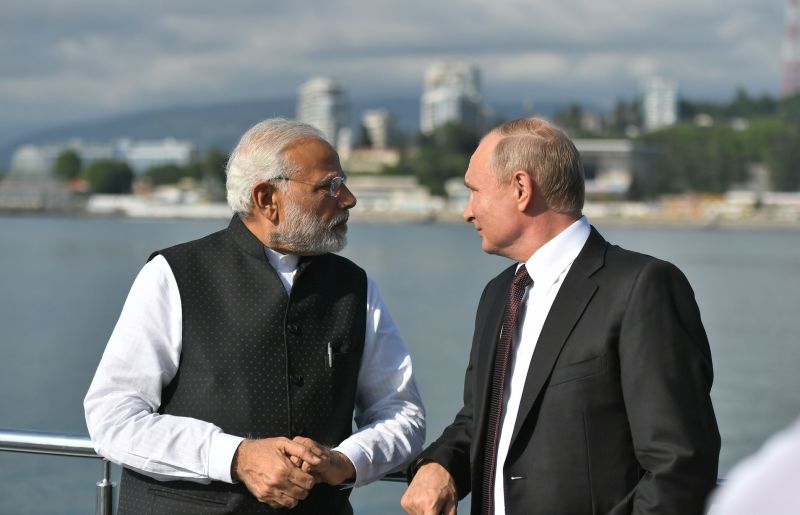Trusting the trusted
By Rohit Srivastava

As India and China are disengaging troops in the Northern Ladakh region, it is time to evaluate India’s friends who could have stood with her against China. There are not many significant global powers that have the requisite weightage to counter or control a belligerent China.
Only Russia and the United States are two global powers who can muster courage against China. It is important to note that the US projects its power through its allies in the Indo-Pacific region. Its two major allies South Korea and Japan have their limitation and they, along with Australia, are making efforts towards self-reliance in defence. They are no more ready to trust the USA, a receding power for their defence against an emerging power.
When seven decades-old allies do not trust the US for their defence, then how can India?
At a time when the US is pushing to sell more weapons to India including Sea Guardian drone, the US is changing visa rules which would adversely impact thousands of Indian students and professionals. People to people contact are one of the cornerstones of Indo-US relations. On the other hand, the US is yet to revoke CAATSA on Indian purchases from Russia. This is not the behaviour of true friends.
Now, India is left with trusted all-weather ally Russia.
At the height of tension, Indian defence minister, on June 23, visited Russia with a high profile delegation to review ongoing defence contracts between the two nations.
On July 2 India approved proposals to buy 21 MiG-29 and 12 Su-30 MKI for INR 18,000 cr ($2.5 b). This is in addition to over $14 billion worth of various contracts signed between both countries since 2018. No other country has offered India strategic weapons like an aircraft carrier, S-400, a nuclear submarine, advanced stealth frigates etc.
In the last two years, India has ordered around two billion dollar worth of ammunitions for Russian systems including tanks, air defence artillery etc.
What the US by now has offered are its decade-old platforms like Apache, Chinook, etc which are at their technological end and the US is developing platforms to replace them.
The Indo-Russian joint venture to make AK-203 assault rifles will provide India with a cost-effective weapon for its soldiers. It also allows India to sell it into the world market. This JV goes one step ahead of the BrahMos development project, another example of a trusted partnership.
The air-launched Brahmos could be a game-changer in any conflict in South Asia. It has enormous export possibilities. The two sides are working towards a hypersonic version along with a 600 km range version of this missile.
Not only has Russia leased its nuclear attack submarine but also supported India in developing its indigenous Arihant class nuclear attack submarine. Thus helping India in achieving nuclear triad.
One very significant point that one needs to remember is that China is making efforts to have a permanent presence in the Indian Ocean. In the last decade, China has expanded its blue water capabilities immensely.
Despite all the efforts and constructing three carriers, the only reason why China has not been able to displace India as the overall security provider in the Indian Ocean region is that Indian Navy has a carrier battle group. India under no circumstances could have acquired an aircraft carrier in when no shipyard in the world was constructing one. Russia refurbished its old helicopter carrier Gorshkov into a ski-jump aircraft carrier INS Vikramaditya. The contract was signed in 2004 and the ship along with 45 MiG-29K arrived in 2013.
With all its delays, the INS Vikramaditya is a capability worth having. With this project, Russia helped India retain its supremacy over Indian Ocean waters. Everything is not perfect with INS Vikramaditya. But the Russian technical support team, who is here to help Vikramaditya team, did not leave India even during the pandemic.
The Russia-India-China trilateral can play a significant role in easing tension between India and China. This group covers almost 2/3 of the Asian landmass and population. Russia shares deep ties with both nation and the emerging geopolitics will create more space for all three to adjust and accommodate each other.
One cannot say India and Russia do not have much to offer to each other besides the strategic sector. The pace at which the technology is changing and the world is expecting the emergence of a new set of technologies which will run the global economy, the Indo-Russian relation will witness new areas of cooperation.




